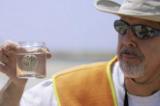Conserving Species
By Reed Noss
The species-centered approach to conservation has been referred to as a “fine filter” and is designed to protect individual species that are imperiled by human activities or that are otherwise recognized as being of high conservation value. The fine filter approach is strongly promoted by the U.S. Endangered Species Act of 1973 and various state laws that offer protection to imperiled species. The larger question of which species to emphasize in land acquisition and other conservation programs requires consideration of additional criteria that depend on the goals of the conservation plan.
Aside from the legal status of a species (i.e., its listing as endangered or threatened), the most commonly used criteria for species prioritization are based on the rarity of the species (in terms of abundance and distribution) and the threats to the species, which are often less well known and therefore are considered secondarily to rarity. NatureServe designates the conservation status of a species or community (and hence its priority) by a number from 1 to 5, preceded by a letter reflecting the appropriate geographic scale of the assessment (G = Global, N = National, and S = Subnational). The numbers correspond to the following designations:
- Critically imperiled
- Imperiled
- Vulnerable to extirpation or extinction
- Apparently secure
- Demonstrably widespread, abundant, and secure
A designation of G1 would indicate that a species is critically imperiled across its entire range (i.e., globally). In this case the species as a whole is regarded as being at very high risk of extinction. A rank of S3 would indicate the species is vulnerable and at moderate risk within a particular state or province, even though it may be more secure elsewhere.
Aside from species prioritizations based on rarity and/or threat, many ecologists recommend more attention to the functional roles of species in ecosystems, especially given the enormity of anthropogenic stresses and rapid environmental (e.g., climatic) change. Reviews of recent empirical and theoretical research on the diversity-stability relationship demonstrate persuasively that ecosystems are generally more stable when they contain a diversity of functional groups and high richness and redundancy of species within functional groups. Plant functional types based on species traits can be associated with specific ecosystem services, such as provision of livestock fodder and reduction in landslide risk.
Certain kinds of species stand out as especially critical to the maintenance of diversity and stability within ecosystems. These can be generally referred to as highly interactive species. Keystone predators, for example, have been demonstrated to enhance diversity of lower trophic levels in a wide array of ecosystems. Reintroducing large carnivores to landscapes, assuming the presence of adequate prey and security from humans, may help stabilize food webs and prevent large herbivores from decimating vegetation structure and eliminating sensitive plant species and birds that depend on a certain vegetation structure.
If we expand the keystone concept to encompass all species that play pivotal roles in ecosystems, disproportionate to their abundance, ecosystem engineers such as beaver and burrowing vertebrates are priority candidates for conservation and restoration. Restoring the gopher tortoise (Gopherus polyphemus) to sites in the southeastern U.S. may enable hundreds of commensal species to exist on sites where they would otherwise be excluded due to lack of burrow habitat. Also of critical importance are dominant or foundation species, another class of highly interactive species, which determine the structure and overall character of an ecosystem.
Some species, whether imperiled or not, serve as useful “focal species” for conservation planning. In many cases these species are wide-ranging, contribute to key ecosystem processes, or otherwise are useful in helping planners determine the best design, configuration, management, or restoration of a network of conservation areas. Australian ecologist Robert Lambeck (1997) offered a method for prioritizing focal species. He identified four main categories of potential focal species:
- Area-limited species (i.e., requiring a large area to maintain a viable population;
- Dispersal-limited species (i.e., limited in their dispersal capabilities or face a high risk in trying to move through human-dominated landscapes);
- Resource-limited species (i.e., dependent on critical resources, such as nest cavities, fruits, or nectar, that are sometimes in critically short supply); and
- Process-limited species (i.e., highly sensitive to the particular qualities of natural processes, such as fire frequency or the duration of flooding, in the landscape).
Lambeck suggested that ideal focal species would constitute the most sensitive species in each of the above four categories, for a particular landscape. These focal species would be expected to serve as umbrella species for other species within each group.
Reed Noss, the Davis-Shine Professor of Conservation Biology at the University of Central Florida, has been one of the lead voices in conservation biology for nearly three decades. He has served as President of the Society for Conservation Biology, Editor-in-Chief of its journal, Conservation Biology, and was a co-founder of the Wildlands Project.
Go Straight to Your State
Learn about conservation and open space in your state.




